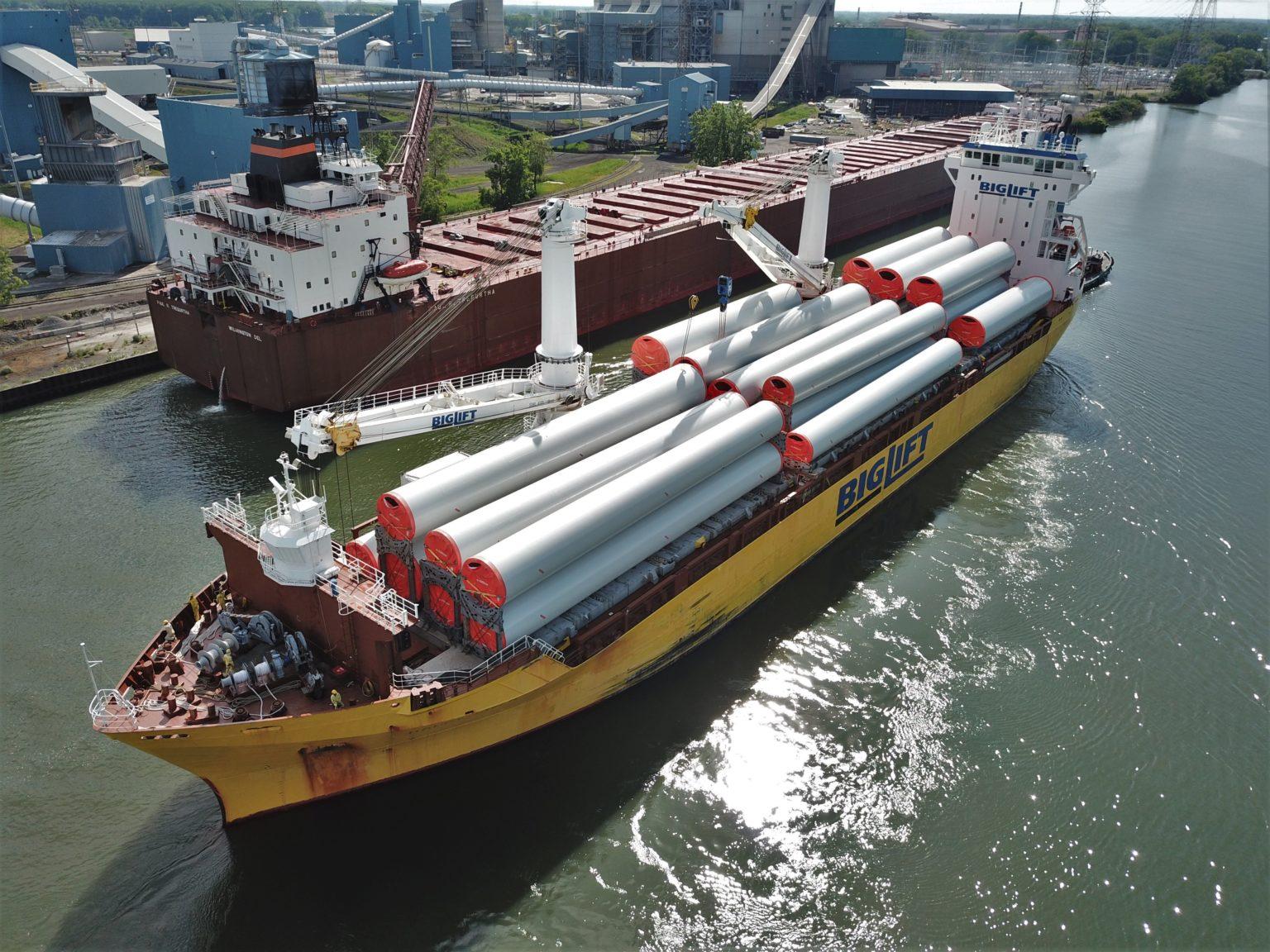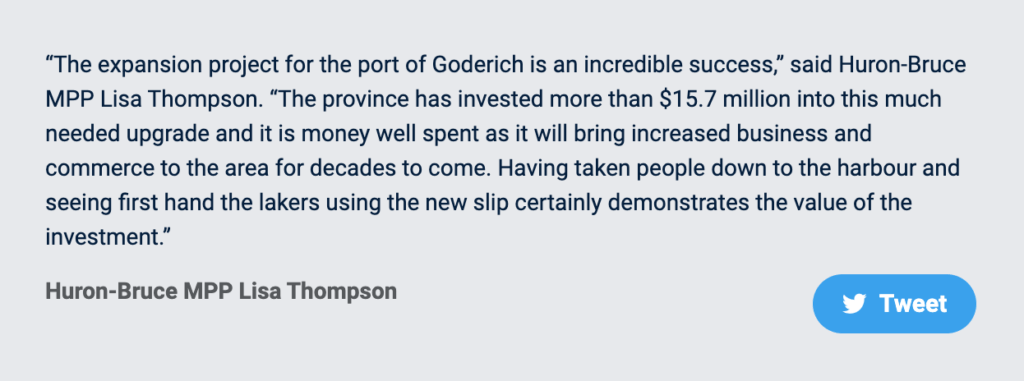
The M/V Saginaw was the first vessel to use the port’s multi-million dollar new wharf expansion, delivering materials for highway construction in the area.
The Port of Goderich has welcomed its first cargo following a multi-million dollar expansion that created new dock #8 and an adjacent 4 acres of wharf. The first cargo to arrive came aboard the M/V Saginaw, a self-discharging bulk carrier owned by Lower Lakes Towing Ltd, a Rand Logistics company. The 16,500 tons of aggregate was loaded at Bruce Mines in northern Lake Huron and is destined for highway construction purposes in this area. The customer was fittingly Miller – Lavis who was also the prime contractor on the building of the project.
“Lavis Contracting Co. Limited was very proud and excited not only in the construction of the new dock but being the first user of the dock,” said Bentley Ehgoetz, Divisional Manager of Lavis Contracting Co Limited. “The use of the dock to bring in premium aggregate by ship, instead of by road, is another tool for our company to use in competing in a very competitive market.”
The Port was divested from the Federal ports system in 1999 and is owned by the Town of Goderich, operated by Goderich Port Management Corp. (GPMC).
The expansion project began life almost 12 years ago and gained momentum when, in 2011, the Ministry of Transportation (MTO) of the Province of Ontario, committed to funding support needed to complete a number of port improvements and create a new dock and wharf to the north of the existing harbour. The entire project has been completed with the use of Port funds and MTO support, with no cost to the local tax base.
“This represents a new era for this port that has so long been constrained by the lack of available space,” said Rowland Howe, President of GPMC, “Despite being one of the busiest Great Lakes ports, the footprint of the existing users and the proximity of the tourist areas left little space to welcome new cargoes.”

The project, once defined, went through the provincial planning process for an individual Environmental Assessment (EA). Several local stakeholders and indigenous groups were consulted during that process. Final approvals were granted in 2017, and in-water construction commenced. During the EA process, several new fish habitat projects were supported to offset the loss of habitat due to the construction. These projects ranged from the rehabilitation of wetlands on Walpole Island to a study of fish feeding habits before and after construction. Construction involved the installation of a steel frame to support the dock and infilling 4 acres behind to create a wharf to land cargo area.
While it is expected that many cargoes will arrive and leave on bulk self-unloading vessels, the dock has been constructed to allow heavy cargoes to be handled as well. The wharf has no structures built on it, allowing maximum flexibility. The dock has Seaway depth draft allowing the largest vessels navigating the Great Lakes and St. Lawrence Seaway System to berth at it.
